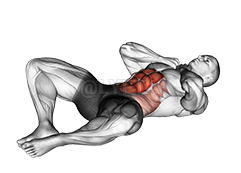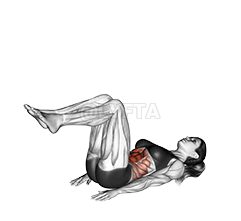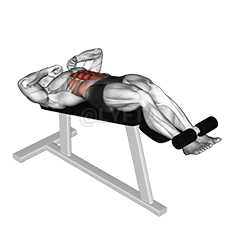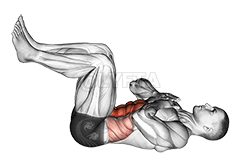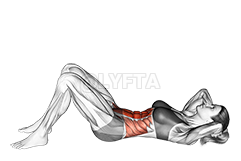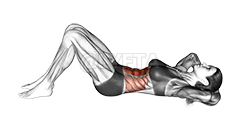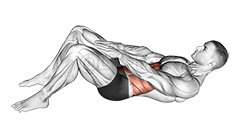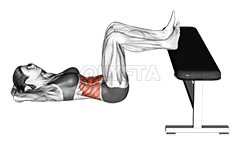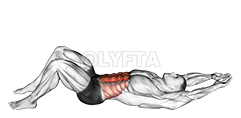
Crunch
Exercise Profile
Related Exercises:
Introduction to the Crunch
The Crunch is a classic abdominal exercise that targets the core muscles, primarily the rectus abdominis, helping to improve posture, balance, and overall body strength. It's suitable for individuals at all fitness levels, from beginners to advanced athletes, due to its modifiable intensity. People would want to perform this exercise as it aids in achieving a toned midsection, enhances athletic performance, and supports daily physical activities.
Performing the: A Step-by-Step Tutorial Crunch
- Place your hands behind your head, making sure not to pull on your neck, or cross them over your chest.
- Slowly lift your upper body towards your knees, using your abdominal muscles, not your neck or head, to pull yourself up.
- Hold this position for a few seconds, focusing on tightening your core muscles.
- Gradually lower your upper body back down to the starting position and repeat the exercise for your desired number of repetitions.
Tips for Performing Crunch
- Controlled Movement: Avoid rushing through your crunches. Fast and uncontrolled movements can lead to ineffective workout and potential injury. Instead, focus on slow, controlled movements. Lift your upper body using your abs, hold for a moment at the top, then slowly lower back down.
- Mind-Muscle Connection: Concentrate on the muscles you are working on. Visualize your abdominal muscles contracting as you lift your body up and relaxing as you lower it down. This mind-muscle connection can help in getting the most out of the exercise.
- Breathing Technique: Proper breathing is crucial for crunches. Inhale as you lower
Crunch FAQs
Can beginners do the Crunch?
Yes, beginners can definitely do the Crunch exercise. It is a basic abdominal exercise that targets the abdominal muscles, primarily the rectus abdominis. However, it's important to learn the correct technique to avoid injury and maximize results. Beginners should start slowly, with a small number of repetitions, and gradually increase as their strength and endurance improve. If any discomfort or pain is felt, it's important to stop the exercise and consult a fitness professional or a doctor.
What are common variations of the Crunch?
- In the Reverse Crunch, you lie on your back, lift your hips off the floor, and crunch them inward towards your chest.
- The Vertical Leg Crunch involves lying on your back with your legs extended straight in the air, then lifting your upper body towards your raised legs.
- The Long Arm Crunch is a variation where you extend your arms straight behind you while lying on your back, then lift your upper body off the ground.
- The Double Crunch is a more intense version where you simultaneously lift your upper body and legs off the ground, crunching them towards each other.
What are good complementing exercises for the Crunch?
- Bicycle crunches are another exercise that complements regular crunches as they target not only the rectus abdominis (the "six-pack" muscles) but also the obliques, which helps to enhance your core strength and overall balance.
- Leg raises are an effective exercise that complements crunches as they target the lower abdominal muscles, an area that crunches alone may not fully engage, thus ensuring a comprehensive core workout.
Related keywords for Crunch
- Bodyweight crunch exercise
- Waist targeting workouts
- Crunch exercise for abs
- Home workout for waist
- Bodyweight exercise for midsection
- Crunches for waistline
- No-equipment waist exercise
- Core strengthening with crunches
- Abdominal crunch workout
- Bodyweight waist slimming exercises
